
FACULTY OF COMMUNICATION
Department of Cinema and Digital Media
CDM 430 | Course Introduction and Application Information
| Course Name |
Women's Cinema
|
|
Code
|
Semester
|
Theory
(hour/week) |
Application/Lab
(hour/week) |
Local Credits
|
ECTS
|
|
CDM 430
|
Fall/Spring
|
3
|
0
|
3
|
4
|
| Prerequisites |
None
|
|||||
| Course Language |
English
|
|||||
| Course Type |
Service Course
|
|||||
| Course Level |
First Cycle
|
|||||
| Mode of Delivery | Online | |||||
| Teaching Methods and Techniques of the Course | DiscussionCase StudyLecture / Presentation | |||||
| Course Coordinator | - | |||||
| Course Lecturer(s) | ||||||
| Assistant(s) | - | |||||
| Course Objectives | This course aims to introduce students to the representation of females in the work of female filmmakers, in films that focus on women’s experiences and in those that are shot from women’s point of view. |
| Learning Outcomes |
The students who succeeded in this course;
|
| Course Description | This course reviews a series of women’s films in the light of readings on gender and cinema. There will be a series of film screenings and class discussions. There is one midterm exam and a final exam. |
|
|
Core Courses | |
| Major Area Courses |
X
|
|
| Supportive Courses | ||
| Media and Management Skills Courses | ||
| Transferable Skill Courses |
WEEKLY SUBJECTS AND RELATED PREPARATION STUDIES
| Week | Subjects | Related Preparation |
| 1 | Introduction | John Berger “Chapter 3” Ways of Seeing. Penguin, pp. 45-64. |
| 2 | Early Women Filmmakers, Dance, Girl, Dance, Dorothy Arzner(1940) | Alice GuyBlache “Women’sPlace in PhotoplayProduction” TheMoving Picture World. Vol.XXI, No.2 (July 1914), p.195. Pamela Hutchinson “Where to begin with early women filmmakers” British Film Institute, 2019. (https://www2.bfi.org.uk/news-opinion/news-bfi/features/where-begin-early-women-filmmakers) |
| 3 | Male Gaze - Screening: Rear Window, Alfred Hitchcock, 1954 (112 min) | Laura Mulvey “Visual Pleasure and Narrative Cinema” Screen, Volume 16, Issue 3, Autumn 1975, pp. 6–18. Tania Modleski “Chapter 5: The Master’s Dollhouse: Rear Window” in The Women Who Knew Too Much. Hitchcock and Feminist Theory. Taylor and Francis. 1988, pp.72-85. |
| 4 | Female Gaze - Screening: The Love Witch, Anna Biller, 2017 (120 min) | Christopher Heron “A Woman Constructing Her World: Anna Biller Interview” The Seventh Art Online. Apr 5, 2017. http://theseventhart.org/anna-biller-interview-the-love-witch/ |
| 5 | Feminist Gaze - Screening: Jean Dielmann, 23, Quai du Commerce, 1080 Bruxelles, Chantal Akerman, 1975 (3 h 21 min) | Ivone Margulies “Chapter 4: Expanding the "I": Character in Experimental Feminist Narrative 100” Nothing Happens. Chantal Akerman’s Hyperrealist Everyday. Duke University Press Books, 1996, 100-128. |
| 6 | Sisterhood - Screening: Thelma and Louise, Ridley Scott (1991) | Sharon Willis “Hardware and Hardbodies, What Do Women Want? A Reading of Thelma and Louise” in Film Theory Goes to the Movies. Cultural Analysis of Contemporary Film. Eds. J. Collins, A. P. Collins, H. Radner. Taylor & Francis, 2012, pp.120-128. Brenda Cooper “‘Chick Flicks’ as Feminist Texts: The Appropriation of the Male Gaze in Thelma & Louise” Women's Studies in Communication. Volume 23, 2000 - Issue 3, pp. 277-306. |
| 7 | Motherhood - Screening: We need to talk about Kevin, Lynne Ramsay, 2001 (112 min) | Sue Thornham “‘A HATRED SO INTENSE....’ We Need to Talk about Kevin, Postfeminism and Women’s Cinema” SEQUENCE: Serial Studies in Media, Film and Music, 2.1 (2013), pp. 1-38. |
| 8 | Midterm Exam | |
| 9 | Non-Western Female Perspectives Ten, Abbas Kiarostami, 2002 (94 min) | Hamid Naficy “Veiled vision/powerful presence: women in post-revolutionary Iranian cinema” Life and art. The New Iranian Cinema, Rose Issa, Sheila Whitaker. The British Film Institute, 1999, p. 44-46. MarijaAntić “Feminist Iranian Cinema: The Counter-Cinema of Abbas Kiarostami and Female Spectatorship” Genero: časopis za feminističkuteorijuistudijekulture, Issue 20, 2016, pp.31-51. |
| 10 | Race and Gender The Watermelon Woman,Cheryl Dunye, 1996 (90 min) | Catherine Zimmer “Histories of The Watermelon Woman: Reflexivitybetween Race and Gender” Camera Obscura68, Volume 23, Number 2, 41-66. 2008. bell hooks “The oppositional gaze: Black female spectator” Black Looks: Race and Representation. South End Press, 1992, pp. 115-132. |
| 11 | Queer Femininities Portrait of a lady on Fire. Celine Sciamma. 2019 (119 min) | Albertine Fox “Hearing the Crackles in the Background: Listening and Female Intimacy in ‘Portrait of a Lady on Fire” Screen Queens. 14 April 2020. Alice Blackhurst “The defiant muse” LA Review of Books. 22 December 2019. (https://lareviewofbooks.org/article/the-defiant-muse/) |
| 12 | Trans-femininities A Fantastic Woman, Sebastian Lelio (2017) | JoseTeodoro “A FantasticWoman” Film Comment, Vol.54, Iss.1 (Jan-Feb 2018), pp.71-72. Penny Miles “A FantasticWomanhighlightsChile’slongbattlefor LGBTI rights” TheConversation, March 7, 2018. (https://theconversation.com/oscar-for-a-fantastic-woman-highlights-chiles-long-battle-for-lgbti-rights-92956) |
| 13 | Social Class and Gender Tereddüt, YeşimUstaoğlu, 2016 (105 min) | Susan Hayward “Class” in Cinema Studies: The Key Concepts. Routledge, 2013, pp. 59–64. Zeynep KurtuluşKorkman “Film Review: Clair obscur/Tereddüt” Journal of Middle East Women's Studies. 14(2). 2018, pp. 230-232. |
| 14 | Representation of Female Experience Bilge and her Apprentice,BelminSöylemez, 2014 (21 min) Tuesday, ZiyaDemirel, 2015 (12 min) Vanished into Blue, AbdurrrahmanÖner, 2012 (12 min) | Teresa Lauretis “Aestheticand Feminist Theory: RethinkingWomen’sCinema” New GermanCritique. No. 34 (Winter 1985), pp. 154-175. Anneke Smelik “Forces of Subversion: On the Excess of the Image” in And the Mirror Cracked. Feminist Cinema and Film Theory. 1998. MacMillan Press, pp.123-150. |
| 15 | Semester Review | |
| 16 | FİNAL SINAVI |
| Course Notes/Textbooks | |
| Suggested Readings/Materials |
EVALUATION SYSTEM
| Semester Activities | Number | Weigthing |
| Participation |
1
|
20
|
| Laboratory / Application | ||
| Field Work | ||
| Quizzes / Studio Critiques | ||
| Portfolio | ||
| Homework / Assignments | ||
| Presentation / Jury | ||
| Project | ||
| Seminar / Workshop | ||
| Oral Exams | ||
| Midterm |
1
|
30
|
| Final Exam |
1
|
50
|
| Total |
| Weighting of Semester Activities on the Final Grade |
3
|
100
|
| Weighting of End-of-Semester Activities on the Final Grade | ||
| Total |
ECTS / WORKLOAD TABLE
| Semester Activities | Number | Duration (Hours) | Workload |
|---|---|---|---|
| Theoretical Course Hours (Including exam week: 16 x total hours) |
16
|
3
|
48
|
| Laboratory / Application Hours (Including exam week: '.16.' x total hours) |
16
|
0
|
|
| Study Hours Out of Class |
16
|
2
|
32
|
| Field Work |
0
|
||
| Quizzes / Studio Critiques |
0
|
||
| Portfolio |
0
|
||
| Homework / Assignments |
0
|
||
| Presentation / Jury |
0
|
||
| Project |
0
|
||
| Seminar / Workshop |
0
|
||
| Oral Exam |
0
|
||
| Midterms |
1
|
15
|
15
|
| Final Exam |
1
|
25
|
25
|
| Total |
120
|
COURSE LEARNING OUTCOMES AND PROGRAM QUALIFICATIONS RELATIONSHIP
|
#
|
Program Competencies/Outcomes |
* Contribution Level
|
||||
|
1
|
2
|
3
|
4
|
5
|
||
| 1 | To be able to have fundamental knowledge about narrative forms in cinema, digital and interactive media, and the foundational concepts relevant to these forms. |
X | ||||
| 2 | To be able to create narratives based on creative and critical thinking skills, by using the forms and tools of expression specific to cinema and digital media arts. |
|||||
| 3 | To be able to use the technical equipment and software required for becoming a specialist/expert in cinema and digital media. |
|||||
| 4 | To be able to perform skills such as scriptwriting, production planning, use of the camera, sound recording, lighting and editing, at the basic level necessary for pre-production, production and post-production phases of an audio-visual work; and to perform at least one of them at an advanced level. |
|||||
| 5 | To be able to discuss how meaning is made in cinema and digital media; how economy, politics and culture affect regimes of representation; and how processes of production, consumption, distribution and meaning-making shape narratives. |
|||||
| 6 | To be able to perform the special technical and aesthetic skills at the basic level necessary to create digital media narratives in the fields of interactive film, video installation, experimental cinema and virtual reality. |
X | ||||
| 7 | To be able to critically analyze a film or digital media artwork from technical, intellectual and artistic perspectives. |
|||||
| 8 | To be able to participate in the production of a film or digital media artwork as a member or leader of a team, following the principles of work safety and norms of ethical behavior. |
X | ||||
| 9 | To be able to stay informed about global scientific, social, economic, cultural, political, institutional and industrial developments. |
|||||
| 10 | To be able to develop solutions to legal, scientific and professional problems surrounding the field of cinema and digital media. |
|||||
| 11 | To be able to use a foreign language to communicate with colleagues and collect data in the field of cinema and digital media. ("European Language Portfolio Global Scale", Level B1). |
|||||
| 12 | To be able to use a second foreign language at the medium level. |
|||||
| 13 | To be able to connect the knowledge accumulated throughout human history to the field of expertise. |
X | ||||
*1 Lowest, 2 Low, 3 Average, 4 High, 5 Highest
NEWS |ALL NEWS
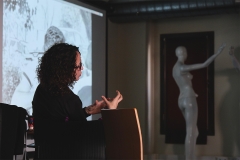
"Working with Found Footage" Workshop Organized with Zeyno Pekünlü
Artist, director, activist and academician Zeyno Pekünlü was the guest of CDM232: Digital Film Studio II.
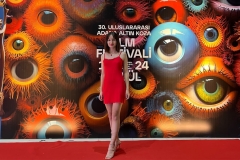
CDM senior year student Ecem has been selected to the Animation category at Adana Altın Koza Film Festival
CDM 4th-grade student Ecem Çörtle has been selected as a finalist in the National Student Films category of the 30th International Adana
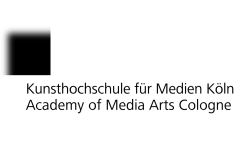
CDM graduate Eylül Berivan Kızılırmak has been accepted to the Cologne Academy of Media Arts
CDM graduate Eylül Berivan Kızılırmak has been accepted to the master's program at the Academy of Media Arts Cologne (Kunsthochschule für Medien Köln).
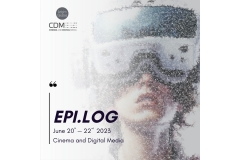
Traditionalistic CDM End of Year Exhibition EPI.LOG took place in FC Studios
Cinema and Digital Media End of Year Exhibition EPI.LOG 2023, organized as part of IUE Faculty of Communication Exhibition "FC-EX 2023", was
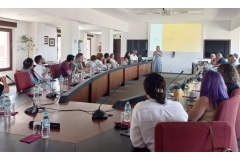
IUE Faculty of Communication Advisory Board members visited our Faculty and Studios on June 22, 2023
IUE Faculty of Communication Advisory Board members Andreas Treske, Ayşe Matay, Barbaros Görgü, Dilek Gappi, Elif Demirci İşleğen, Emine Uysal Berger, Murat
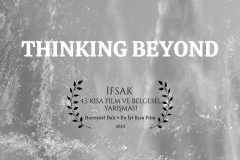
Ataberk awarded at the İFSAK 43rd National Short Film and Documentary Competition
Our third-year student, Ataberk Eyolcu, returned from the 43rd National Short Film and Documentary Competition of İFSAK (Istanbul Photography and Cinema Amateurs
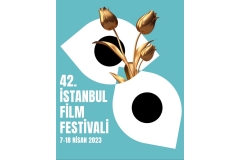
Our third-year CDM student Fikret Başar Kaya was at the 42nd Istanbul Film Festival
Our third year CDM student Fikret Başar Kaya participated as a Young Jury at the 42nd Istanbul Film Festival held on April
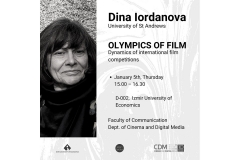
CDM hosted Dina Iordanova
Prof. Dina Iordanova gave a speech titled Olympics of Film: Dynamics of international film competitions on Thursday, January 5, 2023, in D002 at Izmir

